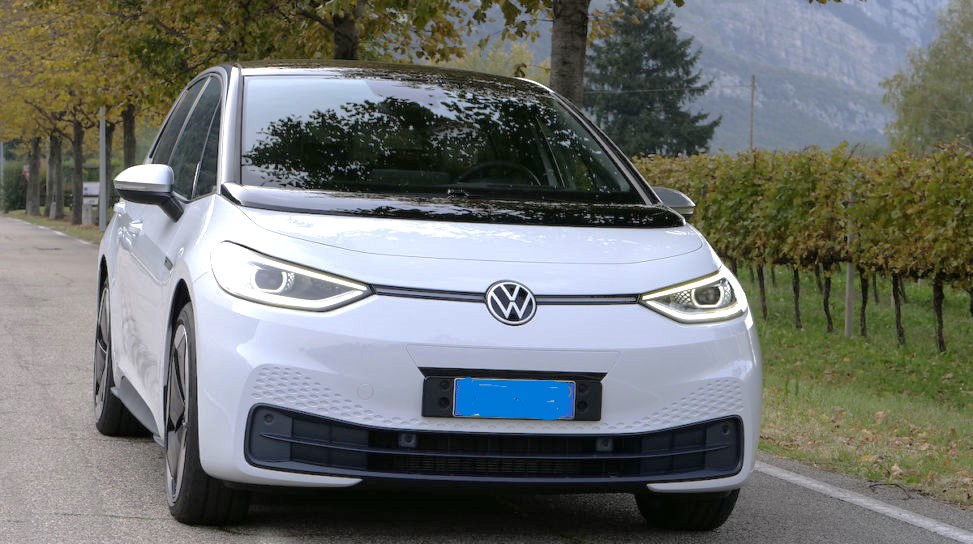All cars, including electric cars, charge some sort of “gravity” battery when going uphill which is based on weight and elevation difference. Don’t take advantage of it, thermography does. This is a concept that Aldo explains very well, starting with his testing on the four passes of the Sella alpine massif.
by Aldo Dalpiaz
Intrigued by your previous articles on electric car consumption in the mountains, today (yesterday for those of you reading ed) I wanted to take advantage of the public holiday to do a practical test.
I chose a classic circular route in the mountains, I would say legendary for cycling lovers, the Tour Of the four passes around the Scylla group In the Dolomites: Canazei, Pordoi Pass, Arabba, Campolongo Pass, Corvara in Badia, Gardena Pass, Selva di Val Gardena, Sella Pass and back to Canazei. I left home with my wife and my wife ID3 45 kWh And I got to Canazei recharged up to 90% to succeed in it Do it all the way without further refills. The temps were around 12-14 degrees, which is not ideal for a battery so I took one into account as well Air conditioning consumption rate Cockpit and battery. However, the car is equipped with a heat pump, so I don’t think these consumptions had a significant effect.
At each of the locations down in the valley and near the trails, I measured how much charge was left in the battery so I could then make some considerations regarding consumption.
– knowledge of the height of localities and passes, You’ve got different level variations And I’ve reported it all in the spreadsheet below.
Since some readers claim that electric cars overestimate consumption on mountain roads, which I don’t agree with, I broke down the data in order to get every point of the track as well. Potential energy stored in the mass of the car compared to the starting point (Canazei) and then partly brought back by regenerative braking. My calculations show that the energy stored in the vehicle, is given by the sum of the energy in the electric battery and in “gravity” battery (vehicle and passenger mass), it continues to decrease gradually with the passage of kilometers traveled, without showing an exaggerated peak consumption.
For example, from Canazei to Paso Pordoi electric battery It indicates a decrease from 90 to 76% of the charge, which corresponds to a Consumption of about 6.3 kWhBut who are these 4.15 stored in the “gravity battery” Hence the consumption The real one is only 2.15 kWh.
Walking Then from Pordoi to Arabba the electric battery is recharged at 2.25 kWh, but with potential energy reduced from 4.15 to 0.80 kWh,Consumption in proportions is 1.1 kWh. Even where there are other important recharges, such as from Passo Sella to Canazei, the 2.7 kWh, Total consumption is still positiveas expected, because it occurs at the expense of potential energy.
The really amazing thing is that according to On-board computer calculated consumption over the entire loop is only 12.7 kWh per 100 kmAfter covering 4 mountain passes for a total distance of 75 km and a vertical drop of 2270 metres.
I set up the account using detected data It seems to me that a Consumption of 14.4 kWh per 100 km, I can only explain the difference by assuming that the vehicle consumption data does not take into account air conditioning consumption.
However, consumption figures remain really low compared to the usual out-of-town road trip numbers and that means that Speed punishes consumption much more than hills.
So I came to the conclusion that the electric car is particularly at home on mountain roads, which I was already convinced of, the important thing is Make sure you have enough charge to reach the highest point From the itinerary, regenerative recharging will ensure a return with surprisingly low fuel consumption compared to a flat road and even more so compared to the same route taken by a thermal car.
Oh, I forgot, I have It consumes 10.8 kWhfor which a Be Charge Be Light subscription cost me $50 0.4 € / kWh and therefore 4.32 € for the whole trip.
– participation in newsletters and channel Youtube to electric fi –

“Explorer. Devoted travel specialist. Web expert. Organizer. Social media geek. Coffee enthusiast. Extreme troublemaker. Food trailblazer. Total bacon buff.”


